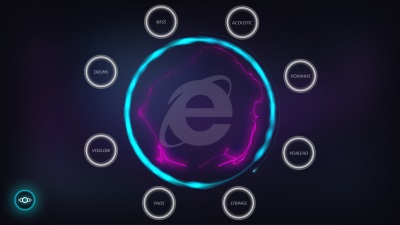Browser touch support: Microsoft's magic tablet ingredient

Lost in the noise around the IE 10 launch for Windows 7 were some studies underlining the importance of touch support in Microsoft's browsers. With its own Surface tablets, and Windows 8 taking advantage of the Trident rendering engine, it's little wonder that Microsoft wants to emphasise the significant touch capabilities of its browser.

One key technological foundation, pointer events, is designed to deal with an issue that faces web developers attempting to produce responsive sites that work across phones, tablets, and PCs: how to work with the multitude of different ways users may interact with a page. Adding code to support touch and mouse events can be complex, and often leads to sites that depend on experimental features — and that may well depend on people using specific hardware. Pointer events are designed to abstract away from the input technology in use.
Most browsers still treat touch and pen events as mouse input, which means that key effects, like hover and mouse over, are lost when a user is working with touch — something that can be a problem when such events are used to deliver user interactions, like tooltips or delivering JavaScript events to page code. The abstraction of pointer events builds on the existing mouse model, making them easy to add to existing sites.
Pointer events has been submitted to the W3C and is currently a Last Call Working Draft (the final step before becoming a W3C Recommendation). As well as supporting it in IE, Microsoft has submitted code for pointer events to WebKit, and it's currently available in an experimental build of Chromium.
Contributing a touch specification to the W3C, and even writing a prototype version for the open-source WebKit rendering engine, is all about getting websites to work better for touch in IE 10. Naturally, Microsoft is keen to point to research it has commissioned to show where IE 10 beats browsing on iPad and Android tablets.
Principled Technologies timed common tasks like opening websites, saving them on the Start screen and searching the web while you have other apps open on an iPad, a Nexus 7, and a Samsung Series 7 Slate running Windows 8. IE 10 came out faster in 7 out of 10 tests; in some cases, it was 60 percent faster than iOS or Android.
That might explain the 85 percent of iPad users in Mozaic Group's tests who said that they would consider switching to a Windows 8 tablet after a couple hours of using one. Out of 40 participants, 93 percent said IE 10 was faster and more powerful, while 88 percent said that it was easier to use than Safari on iPad. In a somewhat larger survey by Penn Research, 70 percent of iPad users said that they would switch to a tablet with a better browser; Microsoft is obviously hoping that will be a Windows 8 tablet, and the resulting new ad campaign is presumably to get their attention.
That advertising love for IE 10 on Windows 8 is set to coincide with the Windows 7 browser launch, courtesy of Seattle musician Blake Lewis; you can remix his Your Touch track at exploretouch.ie. And it's no coincidence the track and the site are all about touch — something Microsoft is keen to emphasise as a strength in IE 10, whether on desktop, phone, or tablet.